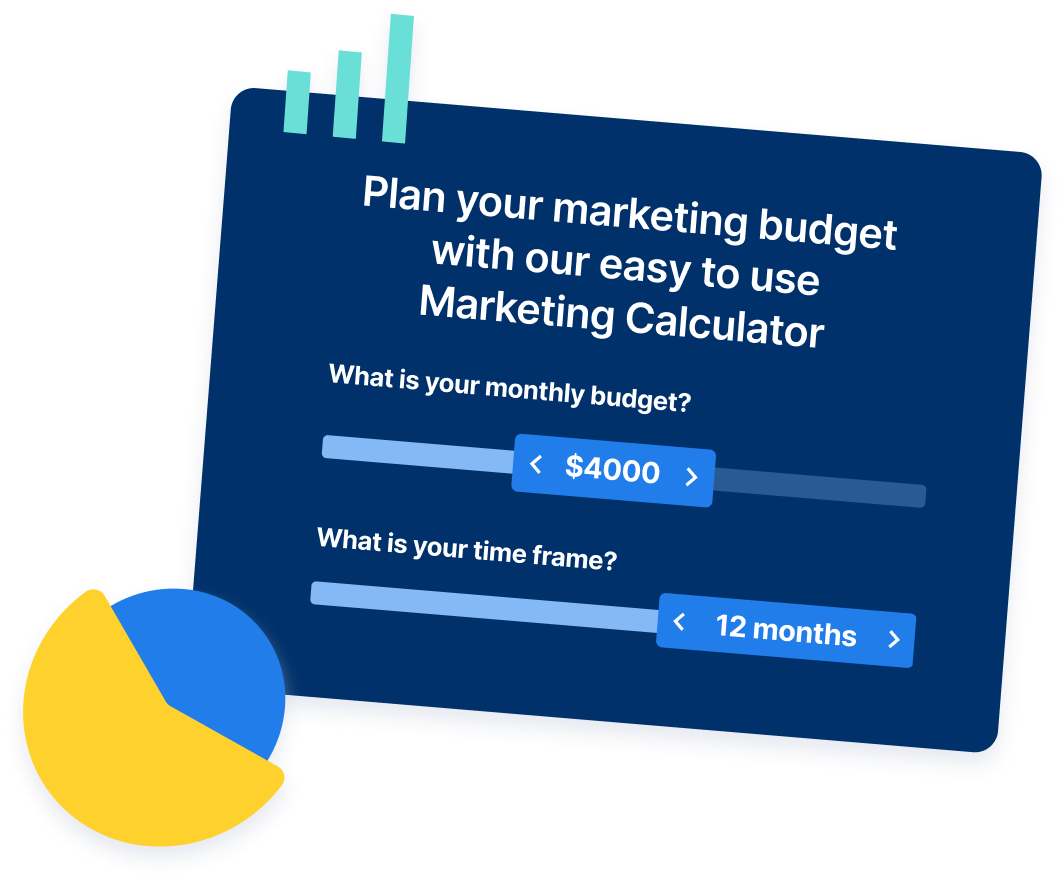-
 Published: Apr 21, 2025
Published: Apr 21, 2025
-
 7 min. read
7 min. read
-
 Sina Mchunu
Sina Mchunu Research & Tech Content Writer
Research & Tech Content Writer
- Sina is a marketing expert who specializes in SEO, AI, and digital marketing content. With over five years of experience, she’s written hundreds of pieces, spanning a variety of topics and industry niches. She loves combining her strong eye for detail and passion for storytelling in her work. You’ll find her fruit picking or horse riding at the local farm when she’s not writing.
AI is revolutionizing how we work, live, and interact with technology at a breakneck pace.
AI automates jobs that typically need human intellect by analyzing massive quantities of data and employing algorithms to seek patterns, predict outcomes, and take the appropriate action.
Let’s explore how AI works, including the definition, types of AI, and more:
- What is AI?
- Types of AI
- How AI works in digital marketing
What is AI?
AI describes a branch of computer science that focuses on replicating human intelligence with machines. This process involves using algorithms and machine learning approaches to allow robots to carry out activities that typically need human intellect.
Types of AI
As of 2025, there are six types of AI that can be broken down into two different categories: capabilities and functionalities. Capabilities refer to the ability of a system to perform tasks, while functionality is the specific actions or operations a system can actually execute.
Types of AI based on capabilities
The following types of AI describe what each AI platform is capable of when given a prompt or instruction, based on its training:
- Narrow AI: Narrow (or weak) AI is trained to understand a narrow range of tasks. They have a specific purpose, so their only strength is that specific situation.
- General AI: These AI systems have human intelligence and the ability to perform a range of tasks. They can learn, adapt, and apply their understanding across different situations.
This table breaks them down as well:
| Characteristic | Narrow AI | General AI |
| Capabilities | Performs specific tasks based on its training | Performs any intellectual task provided |
| Current status | Widely used | In development |
| Examples | Siri | N/A |
| Human-like intelligence | No | Yes |
| Learning ability | Limited to task specific learning | Learns and adapts across multiple forms |
Under this umbrella is also super AI, which is more of a theoretical type of AI. Some people speculate on the ability of AI to one day have emotions and surpass human intelligence. However, this is purely hypothetical at this point.
Types of AI based on functionalities
These types of AI explain how each type of AI functions. It can also explain the practical applications of AI:
- Reactive machines: Most basic form of AI — they operate purely based on present data and do not store any previous experience or actions. They respond to fix inputs and do not adapt.
- Limited memory AI: These AI tools can learn from past data to improve future responses. They have short-term memory, but they can use their historical data to make decisions.
- Theory of mind: This type of AI aims to understand human emotions, beliefs, intentions, and desires. Theory of mind AI is in development, but it would allow machines to engage in more sophisticated interactions should it be fleshed out in the future.
- Self-aware AI: This advanced stage of AI possesses self-consciousness and awareness like a human being. Again, this type of AI does not exist currently — it is strictly hypothetical.
This table also summarizes the difference:
| Type of AI | Description | Capabilities | Examples |
| Reactive machines | Basic AI that responds to specific inputs with no learning capability | Responds to specific stimuli, no memory or learning from the past, task-specific functions | IBM’s Deep Blue |
| Limited memory | AI that uses past experiences to inform decisions | Learns from historical data, applies experiences to related situation, improves over time | ChatGPT, self-driving cars |
| Theory of mind | Hypothetical AI that understands emotions and thoughts | Understands human emotions, predicts behavior based on mental states and emotions | Not developed — in research |
| Self-aware AI | Advanced AI with its own consciousness | Would have self awareness, could make autonomous decisions | Does not exist |
How AI works in digital marketing
The global market revenue forecast for AI in marketing in 2028 is $107 billion. With that in mind, understanding how to use this technology for marketing can make all the difference in your campaign’s competitive edge.
To learn more about how AI works practically, let’s cover some common applications of AI in digital marketing:
- Predictive analytics
- Customer segmentation
- Ad targeting and placement
- Automation
- Personalized content creation
1. Predictive analytics
Predictive analytics is a fundamental use of AI in digital marketing. AI helps us better understand customer behavior and preferences by evaluating data like purchase records, website visits, and social media posts. You can develop more pertinent and interesting marketing campaigns with the help of this data.
This application requires using algorithms and machine learning to massive data sets to make accurate forecasts. You can use predictive analytics to identify your most valuable customers and the marketing strategies most likely to generate sales.
Predictive analytics may also benefit your company in protecting itself from fraud and consumer defection. In short, AI-supported predictive analytics is a potent tool that may help you enhance your marketing tactics and increase client retention through data-driven decisions.
2. Customer segmentation
Customer segmentation is a crucial use of AI in digital marketing. This method categorizes customers into subsets defined by shared demographic and psychographic information. By segmenting their audiences in this way, marketers can better meet the demands of each subgroup and boost engagement and sales.
AI allows for more precise and timely client segmentation by analyzing massive data volumes to reveal trends that people would miss. With client segmentation, a clothing store may, for instance, focus on a subset of millennials who have already demonstrated an interest in eco-friendly styles. The store will be able to target these consumers with values-based marketing and product suggestions based on data gleaned by AI.
This strategy will help you market to and sell to that demographic more successfully. Ultimately, both the customers and the companies gain from these improved marketing initiatives, which are more targeted and efficient.
3. Ad targeting and placement
Search queries, clickstreams, and social media activity are just a few examples of the digital and analog imprints that AI may employ to learn about a user’s preferences and behaviors.
You’ll see an increase in the possibility that the target audience will take the desired action. That’s due to the usage of this data to send more relevant messages to individuals who are most likely to be interested in them.
Ad placement in AI-driven campaigns is just as crucial as targeting. Ad placement algorithms consider user activity and page content when deciding where to show an ad.
This may involve strategic placement on particular websites, social media channels, or even specific media like articles or videos.
You can strategically place your ads in front of the right people at the right times, increasing the likelihood of a positive response and a successful sale with AI.
4. Automation
AI automation streamlines and optimizes numerous marketing activities, such as email marketing, social media management, and PPC advertising, utilizing AI-powered tools and software. Your business can save time and money while increasing the overall efficacy of its marketing initiatives by automating these operations.
AI-powered technologies, for instance, can evaluate consumer information and behavior to produce customized email campaigns that are more likely to generate sales. Social media management technologies may help organizations measure key performance indicators (KPIs), monitor interactions, and schedule and post content across many channels.
Moreover, PPC advertising systems can automate ad placement, bidding, and keyword research to maximize campaign ROI. Automation is becoming increasingly important for contemporary marketing tactics since it enables organizations to function more efficiently.
5. Personalized content creation
By automatically generating outlines for product descriptions, blog pieces, and social media posts, AI can streamline the content generation process, giving you more time and resources to concentrate on strategy and analysis.
The future of marketing will heavily rely on the types of AI content being developed today. However, don’t get the wrong idea. You don’t want AI to take over the content creation process completely. Your content should still be developed primarily by humans. But, AI content tools like ChatGPT can help with drafting some initial outlines.
Invest in revenue-driving AI with WebFX
At WebFX, we offer a range of AI solutions — including RevenueCloudFX and Nutshell CRM — that can help your business automate processes, optimize customer experiences, and boost revenue.
With our AI solutions, your business can achieve greater efficiency and profitability in today’s fast-paced digital landscape. Our AI specialists can collaborate with you to determine the most suitable options for your company and then assist in their smooth implementation.
Why wait?
Contact us online or call 888-601-5359 to speak with a strategist and take the first step towards revolutionizing your business!
-
 Sina is a marketing expert who specializes in SEO, AI, and digital marketing content. With over five years of experience, she’s written hundreds of pieces, spanning a variety of topics and industry niches. She loves combining her strong eye for detail and passion for storytelling in her work. You’ll find her fruit picking or horse riding at the local farm when she’s not writing.
Sina is a marketing expert who specializes in SEO, AI, and digital marketing content. With over five years of experience, she’s written hundreds of pieces, spanning a variety of topics and industry niches. She loves combining her strong eye for detail and passion for storytelling in her work. You’ll find her fruit picking or horse riding at the local farm when she’s not writing. -

WebFX is a full-service marketing agency with 1,100+ client reviews and a 4.9-star rating on Clutch! Find out how our expert team and revenue-accelerating tech can drive results for you! Learn more
Try our free Marketing Calculator
Craft a tailored online marketing strategy! Utilize our free Internet marketing calculator for a custom plan based on your location, reach, timeframe, and budget.
Plan Your Marketing Budget

Proven Marketing Strategies

Proven Marketing Strategies
Try our free Marketing Calculator
Craft a tailored online marketing strategy! Utilize our free Internet marketing calculator for a custom plan based on your location, reach, timeframe, and budget.
Plan Your Marketing Budget





